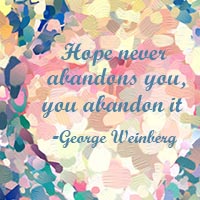“Hatch Show Print takes me back to my early performance days. Lots of those great traditions have been lost, but I’m happy to see that Hatch still lives on.” – B.B. King, blues musician
If you need the name of a print shop to identify with letterpress Hatch Show Print (“HSP”), is the place. Established in 1879, it is one of the oldest letterpress shops in the United States and one of the reasons letterpress lives on.
“Advertising without posters is like fishing without worms.” – The Hatch Brothers
Over a hundred years ago this Nashville treasure produced posters for vaudeville, circus, and minstrel shows. Since then they’ve become part of the Country Music Hall of Fame and produced posters for Elvis Presley, Bruce Springsteen, Emmylou Harris, and ColdPlay and many more. Check out a book about Hatch Show Print on Amazon.
For more about Hatch Show Print check out The Smithsonian Institution Traveling Exhibition Service’s story on American Letterpress.
The second reason letterpress lives on is its tactile appeal. In this age of slick advertisements printed on glossy stock, letterpress embraces the look and feel of paper with grain and satisfies the human sensitivity to texture.
You can feel the debossing of the paper. Letterpress shops like Boxcar Press in Syracuse, NY embrace these techniques.
The third reason letterpress lives on is the use of the photopolymer plate. A line drawing can be photo-imaged to make it’s reverse image on film which is then burned onto a photopolymer plate. This process is described quite well in the Three Red Hens blog.
In a video under two minutes Matthew Wengerd of A Fine Press and Swan City Press shares a little about photopolymer plates.
Cody Langford of It’s Fancy Letterpress Studio in Missouri, shows the actual step-by-step process in his Youtube video.
It’s not accident that the resurgence vinyl records, slient movies, and letterpress are overlapping. We’re discovering all sorts of ways to take a break from the “high technology intoxication zone” (a term coined by author and social forecaster John Naisbitt), aren’t we?
